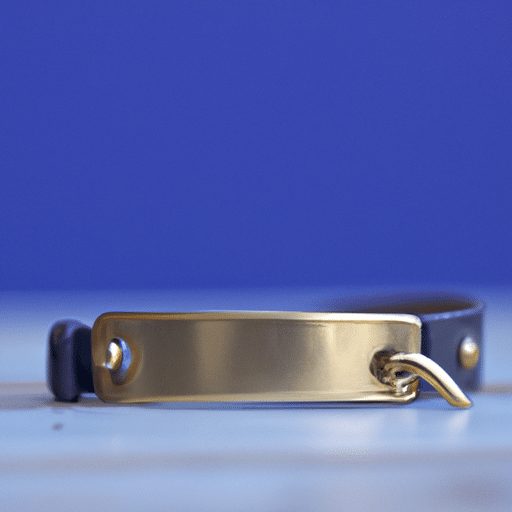In our search for the perfect collar that puts an end to incessant barking, we have tried and tested numerous options, each one promising to be the ultimate solution. However, after exhaustive research and considering various factors such as comfort, effectiveness, and humane training methods, one collar stands out from the rest. This article aims to guide you towards finding the best collar for your furry friend, ensuring a peaceful environment for both you and your beloved canine companion.
Factors to Consider When Choosing a Dog Collar
When it comes to choosing a dog collar, there are several factors that need to be taken into consideration. These factors can greatly impact how effective the collar is in stopping your dog from barking excessively. Let’s dive into the key factors to consider when choosing a dog collar.
Table of Contents
Size and Fit
One of the most important factors to consider when choosing a dog collar is the size and fit. A collar that is too tight may cause discomfort and restrict your dog’s movement, while a collar that is too loose may slip off. It is crucial to measure your dog’s neck accurately to ensure the collar fits properly. Additionally, adjustable collars are a great option as they can be resized as your dog grows.
Material
The material of the dog collar is another factor to consider. Collars are commonly made from various materials such as nylon, leather, or metal. Each material has its pros and cons. Nylon collars are lightweight, durable, and easy to clean, making them a popular choice. Leather collars, on the other hand, are known for their durability and stylish appearance. Metal collars are often used for larger and more aggressive dogs.
Comfort
Ensuring your dog’s comfort is essential when choosing a collar. Consider factors such as the width of the collar and the presence of any padding or lining. A wider collar distributes pressure more evenly, reducing the chance of discomfort. Additionally, padding or lining on the inner side of the collar can prevent chafing and irritation. Remember, a comfortable dog is more likely to cooperate with training efforts.
Effectiveness
The effectiveness of a dog collar in stopping excessive barking is a crucial factor to consider. Different collar types utilize different methods to deter barking, such as citronella sprays, shocks, ultrasonic sounds, vibrations, or remote control. Understanding the effectiveness of each type and choosing the one that aligns with your dog’s temperament and needs is important. It is recommended to consult with a professional dog trainer or veterinarian for guidance in selecting the collar type that will be most effective for your dog.
Safety Features
Last but not least, safety features should be carefully considered when choosing a dog collar. Look for collars with quick-release buckles or a breakaway design. These safety features allow the collar to release or break away in case it becomes entangled, preventing choking or injury. Additionally, reflective or high-visibility collars can enhance safety during nighttime walks or outings.
Types of Collars for Barking Dogs
When it comes to addressing excessive barking in dogs, there are several types of collars available in the market. Each type utilizes a different method to discourage your dog from barking. Let’s explore the most common types of collars for barking dogs.
Citronella Collars
Citronella collars work by releasing a burst of citronella spray near the dog’s nose when triggered by the sound of barking. Dogs generally find the smell of citronella unpleasant, and the spray acts as a deterrent. It is important to note that citronella collars are considered humane as they do not cause any pain or discomfort to the dog. However, they may not be effective for all dogs, especially those who are not bothered by the scent of citronella.
Shock Collars
Shock collars, also known as static collars, deliver a mild electric shock to the dog when they bark excessively. The intensity of the shock can usually be adjusted. While shock collars can be effective in stopping barking, they are controversial and not recommended for every dog. It is essential to use shock collars responsibly and under the guidance of a professional trainer, as improper usage can lead to undue stress or harm to the dog.
Ultrasonic Collars
Ultrasonic collars emit a high-frequency sound that is only audible to dogs. When triggered by barking, the collar emits the ultrasonic sound, which is intended to interrupt the dog’s barking behavior. Ultrasonic collars are considered more humane than shock collars, as they do not involve physical discomfort. However, their effectiveness may vary depending on the dog’s hearing abilities and sensitivity to sound.
Vibration Collars
Vibration collars work by delivering a gentle vibration to the dog’s neck when barking is detected. The vibration serves as a distraction and can help redirect the dog’s attention away from barking. Vibration collars are generally considered safe and can be effective for dogs that are responsive to tactile stimulation. However, they may not be suitable for all dogs, particularly those with certain health conditions or sensitivities.
Remote Control Collars
Remote control collars allow the dog owner to manually activate a specific correction when the dog barks excessively. These collars are equipped with a handheld remote control that enables the owner to trigger a sound, vibration, or mild static correction when necessary. Remote control collars offer more control and customization options, making them suitable for dogs with specific training needs or those in professional training programs.
Pros and Cons of Different Collars
Each type of dog collar comes with its own set of advantages and disadvantages. Let’s explore the pros and cons of the different collar types mentioned earlier.
Citronella Collars
Pros:
- Humane and do not cause pain or discomfort
- Can be effective for certain dogs
- Safe to use and do not pose a risk of injury
- Can be a useful tool for training and behavior modification
Cons:
- May not be effective for all dogs, especially those not bothered by the scent of citronella
- Scent may become less effective over time
- Requires regular refilling of citronella spray
- Can be more expensive compared to other collar types
Shock Collars
Pros:
- Can be effective in stopping excessive barking
- Offers adjustable intensity levels
- Provides quick feedback to the dog when barking is undesirable
- Can be used as a last resort for certain stubborn dogs
Cons:
- Controversial and not recommended for every dog
- Improper usage can cause stress or harm to the dog
- May interfere with the trust and bond between the dog and owner
- Should only be used under the guidance of a professional trainer
Ultrasonic Collars
Pros:
- Humane and do not cause physical discomfort
- Ideal for sensitive dogs or those with aversions to physical corrections
- Lightweight and easy to use
- Non-intrusive and can be used indoors or outdoors
Cons:
- Effectiveness may vary depending on the dog’s hearing abilities and sensitivity to sound
- Inconsistent results for certain dogs
- May not be suitable for multi-dog households, as the ultrasonic sound can affect other dogs
Vibration Collars
Pros:
- Gentle and safe method of correction
- Suitable for dogs with tactile sensitivities
- Can be effective for certain dogs in redirecting their attention from barking
- Does not require the use of sound, citronella, or shocks
Cons:
- May not be effective for all dogs, particularly those with certain health conditions or sensitivities
- Can be more expensive compared to other collar types
- Requires proper adjustment and positioning on the dog’s neck for optimal effectiveness
Remote Control Collars
Pros:
- Offers control and customization options for training purposes
- Provides flexibility in correcting unwanted barking behaviors
- Can be used in various training scenarios, both indoors and outdoors
- Allows the owner to reinforce commands or cues remotely
Cons:
- Requires active involvement from the owner to initiate correction
- May require additional training to effectively utilize the remote control features
- Can be more expensive compared to other collar types
- Can be misplaced or lost if not properly stored or maintained
Training Methods for Barking Dogs
Using a dog collar to address excessive barking is most effective when combined with appropriate training methods. Let’s explore some training methods that can be used in conjunction with a barking collar.
Positive Reinforcement
Positive reinforcement training involves rewarding your dog for desirable behavior, such as being quiet when commanded or refraining from barking excessively. Rewards can include treats, praise, or playtime. This approach focuses on reinforcing positive behaviors rather than punishing unwanted behaviors. When used alongside a barking collar, positive reinforcement can help your dog understand the correlation between being quiet and receiving rewards, encouraging them to bark less.
Behavioral Training
Behavioral training focuses on identifying and modifying the underlying causes of excessive barking. This approach involves understanding the triggers for your dog’s barking and implementing strategies to address those triggers. For example, if your dog excessively barks due to separation anxiety, behavioral training may involve gradual desensitization and counterconditioning techniques to alleviate their anxiety. Combining behavioral training with a barking collar can help reinforce the desired behavior changes.
Professional Training
In some cases, seeking professional help from a certified dog trainer or behaviorist may be necessary. These professionals have the expertise and experience to analyze your dog’s specific barking behaviors and develop a training plan tailored to their needs. They can provide personalized guidance and support, ensuring that the training methods and collar usage are appropriate for your dog. Professional training can be particularly beneficial for dogs with complex or severe barking issues.
Tips for Properly Using a Barking Collar
While a barking collar can be an effective tool in controlling excessive barking, it is important to use it properly to ensure your dog’s well-being and maximize its effectiveness. Here are some tips for properly using a barking collar:
Consult with a Veterinarian
Before using a barking collar, it is essential to consult with a veterinarian. They can assess your dog’s overall health and behavior, ensuring that a collar is suitable for your dog’s specific needs. A veterinarian can also provide guidance on the most appropriate collar type and help address any concerns or questions you may have.
Follow Instructions
Always carefully read and follow the manufacturer’s instructions when using a barking collar. Each collar type may have specific guidelines for proper usage, including adjusting the intensity level, fitting the collar correctly, and maintaining the collar’s functionality. Adhering to the instructions will ensure that the collar is used safely and effectively.
Monitor Your Dog’s Reaction
Observe your dog’s reactions and behavior when using the barking collar. Pay attention to any signs of discomfort or distress, such as excessive scratching, restlessness, or attempts to remove the collar. If you notice any negative reactions, discontinue the collar’s use and seek advice from a professional.
Do Not Leave Collar on All Day
It is important to remember that a barking collar should not be worn by your dog continuously throughout the day. Extended and constant usage can cause discomfort and may lead to other behavioral issues. Use the collar during specific training or designated times when excessive barking needs to be controlled.
Combine Collar with Other Training Methods
To achieve the best results, combine the use of a barking collar with other training methods, such as positive reinforcement or behavioral training. The collar should be seen as a tool to aid in the training process, not as a standalone solution. Consistency, patience, and positive reinforcement from the owner are essential for successful barking control.
Conclusion
Choosing the right collar for your barking dog is a decision that should be made after careful consideration of various factors. Size and fit, material, comfort, effectiveness, and safety features all play a significant role in determining the appropriate collar for your dog. It is crucial to select a collar that aligns with your dog’s needs and temperament while prioritizing their comfort and safety.
Understanding the different types of collars available, such as citronella, shock, ultrasonic, vibration, and remote control collars, is essential in making an informed decision. Each type offers its own set of advantages and disadvantages, and what works for one dog may not necessarily work for another.
Furthermore, incorporating training methods such as positive reinforcement, behavioral training, or seeking the assistance of a professional trainer can significantly enhance the effectiveness of a barking collar. Combining proper usage of the collar with appropriate training techniques will increase the chances of managing and ultimately reducing excessive barking behavior.
Remember, a barking collar should always be used responsibly and under the guidance of a professional, when needed. By considering the factors, understanding the collar types, and implementing appropriate training methods, you can significantly increase the likelihood of finding the best collar for your barking dog and achieving a quieter and happier canine companion.






























